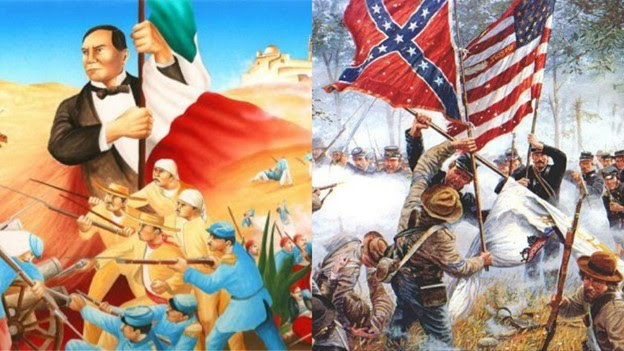by Bruce Hobson

Wearing sombreros, ponchos, and fake mustaches and drinking tequila on Cinco de Mayo is a sign of disrespect and ignorance. Each year in the United States, frat boys take advantage of Cinco de Mayo as a pretext to party knowing nothing of its historical and cultural significance.
Many think Cinco de Mayo is Mexico’s Independence Day. It is not. México celebrates its 1810 independence from Spanish colonial rule on September 16. May 5, 1862 is the day that Mexican forces beat the French at the Battle of Puebla after the invasion of their country by Napoleon III. That date is also the first of Mexico’s four historical transformations.
The excitement over the victory against the French traveled from Puebla to the West Coast of the United States during the US Civil War. Mexican Americans saw the victory as a win for freedom and democracy in the face of slavery and racism. At the same time, they enthusiastically supported the Union when France supported neither the Union nor the Confederacy. The significance of Cinco de Mayo in the United States was begun by Mexicans living on the West Coast during the Civil War.
Mexicans in the American West celebrated in hopes that the Union might be victorious too. They commemorated the victory with parades, dances and banquets, which is part of why the event is so anticipated in the United States, not in Mexico.
A network of Latino groups, Mexican patriotic boards, popularized this holiday on the West Coast after 1862. But over the years, its meaning changed for Mexicans. Beginning in the 1930s, Cinco de Mayo came to symbolize the unity between the United States and Mexico during the Second World War. Since the ’60s it has been a celebration of Chicano power.
But Cinco de Mayo as many know it now is removed from its original context. The market for alcohol and Mexican food during the holiday has been seized by US capitalism. In the 1980s, US beer companies saw the vibrant Cinco de Mayo celebrations as an opportunity for profit. For them, Cinco de Mayo is associated with drunk white people in sombreros, not the deep history of Mexican culture in the United States. When beer and salsa go on sale on Cinco de Mayo, it is clear that profit is the priority. Taking advantage of a holiday as an opportunity to party erases its cultural significance. While Mexicans are stereotyped and marginalized for practicing their culture, others wear costumes that they throw away after recuperating from their Cinco de Mayo hangovers.
Speaking of beer, in 2019 Constellation Brands, producer of Modelo and Corona, began construction of a brewery in the border city of Mexicali. This company would use 1.8 million gallons of water each year in a city where people get up each morning without water in their homes. The construction of the brewery would directly impact the water supplies of Mexicali, however in May of 2020 President Andrés Manuel López Obrador ordered that a referendum be held on the development, putting it to an informal vote of the people. After 76.1% voted against, the plan went down.
Meanwhile, as Mexicans on the border have endured corporate-induced drought, during the global Covid-19 pandemic some White Americans mock their culture drinking beer that would deprive them of humanity’s most precious resource. (Curiously, because many in México associated the Corona brand with the virus, sales of Corona in México plummeted in 2020.) After the plan failed in Mexicali, Nayarit governor Antonio Echeverria García invited the corporation to explore the possibility of a brewery in his state.
Cinco de Mayo celebrations do well to acknowledge the commercialization and appropriation of Mexican culture that this holiday has come to represent in the USA. To truly honor Cinco de Mayo and challenge the capitalist vultures, we can support small Mexican businesses, donate to immigrant rights organizations, and confront those that wear fake moustaches and sombreros.